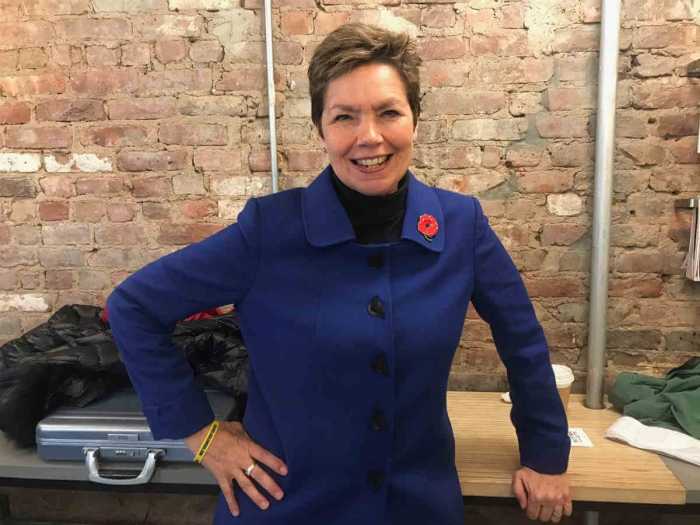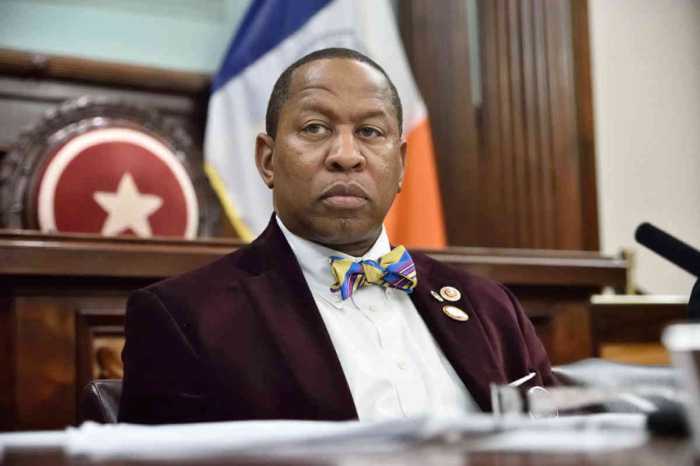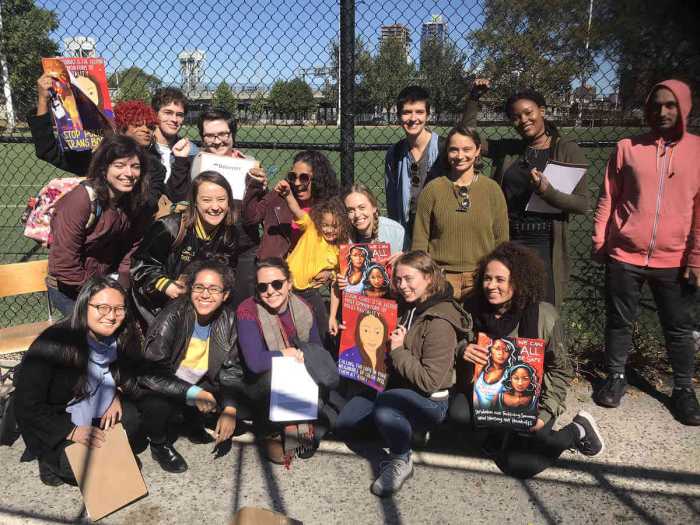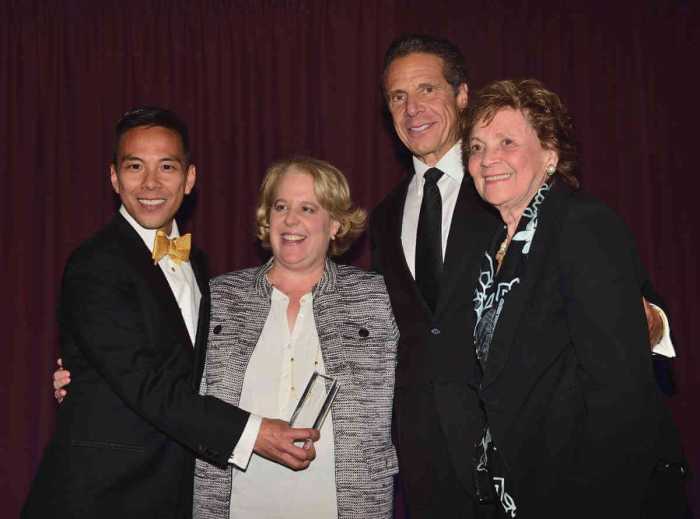On a cloudy, drizzly weekday in early September, volunteer James Serrano was holding down the front desk at Griot Circle, an organization based in downtown Brooklyn that is dedicated to serving LGBTQ seniors of color.
“I feel very comfortable here,” Serrano, who joined the organization as a member in November of last year, told Gay City News. “It’s like a second home.”
As he was finishing his sentence, the doorbell rang. Another visitor was at the door — and Serrano was there to answer, just as he is every Wednesday and Thursday from 3 p.m. to 5 p.m. He rotates with other volunteers who also welcome guests into a space that has become a refuge for older queer clients of color.
The 23-year-old organization offers a plethora of services ranging from educational opportunities to social activities, daily lunch, and case management. Griot Circle, a name derived from a West African term for storytellers who pass down a community’s culture and heritage through oral traditions, is the only staffed organization in the nation specifically serving LGBTQ older adults of color. That unique mission is based on a clear demand out in the community, but it also suggests a broader national ambition — the nonprofit hopes to someday expand its reach across the US, especially as the growth in the population of LGBTQ seniors of color outpaces that of their white counterparts over the next several decades.
That expansive vision can be daunting for a cash-strapped organization. The nonprofit is perched in a nondescript older building tucked into an evolving downtown Brooklyn streetscape, and that is but one indication of the sobering financial realities for an organization desperately clamoring for tax dollars while larger queer and aging organizations enjoy the lion’s share of government funding.
Griot Circle relies mostly on private donors as well as some small bursts of city funding, for which the organization is grateful, especially since other levels of government have not chipped in. But the issue remains: absorbing the needs of a growing demographic requires more resources.
For all these financial limitations, the organization has managed to expand from a health and wellness-based focus to a “comprehensive, one-stop shop service for seniors” under current executive director José Albino, an LGBTQ immigrant of color whose breadth of experience in the aging field brought him to the organization’s top post five years ago.
“I am a therapist,” Albino said as he sat at his desk in his dimly lit office just down the hall from a room full of members engaged in a lively group discussion. “I have been working in the aging field for over 25 years.”
Upon arriving at the organization, Albino implemented a series of changes after noticing there was a lack of proactive focus on the full range of needs facing queer seniors of color. The nonprofit now has support groups for men, women, transgender folks, and HIV-positive individuals, as well as programs in which members go into local communities to provide education about the emerging intersection of aging and HIV.
“Fifty percent of individuals who are HIV-positive in this country are over the age of 50,” Albino pointed out.
Tai Chi, knitting, wood carving, and financial literacy workshops are among other options available to members. The organization has also embarked on a peer-to-peer program so folks can go to movies, shop, and enjoy other activities together.
Griot Circle, to its credit, has not shied away from trying new things.
“We refuse to do bingo,” Albino said, smiling. “Our members deserve a more elevated approach to living in their truth.”
The 400-plus seniors who utilize Griot Circle every year appear pleased with their experience there. Serrano, who lives in the Kensington section of Brooklyn, said he was enduring a housing crisis of his own when he joined Griot Circle at the recommendation of his cousin, who was already a member. Serrano has not looked back.
“I called one day and then I came in and signed up,” he said. “The members and volunteers make everybody feel welcome. There’s a lot of love around here.”
Mental health services have emerged as an important piece of the nonprofit’s mission, especially since many members have faced homophobia and transphobia in their places of worship or in their families.
“This is where we have to realize that this is a population that has not basked in the civil liberties that we have now,” Albino explained. “Everyone is using these gender pronouns and getting married. These are people who came from a place of trauma in the ‘80s and ‘70s when being gay was [viewed as] a psychological disorder. They were getting married and having children to hide who they were.”
Many clients remain closeted at home, so they travel long distances — some commute more than an hour and a half from the Bronx on a daily basis — to the friendlier confines of Griot Circle. The organization hopes to ease that strain by opening satellite locations in other boroughs, but financial hurdles must be surmounted first.
Public dollars don’t come easily. The city’s Department for the Aging provides support through a subcontracting agreement and the organization has received discretionary funding boosts from the local councilmember, Laurie Cumbo, as well as from out gay Councilmembers Carlos Menchaca of Brooklyn and Ritchie Torres of the Bronx and Speaker Corey Johnson of Manhattan. Discretionary funds, however, are only shelled out on a year-to-year basis and are subject to budget cuts.
“That [funding] doesn’t even translate to even one percent of our budget,” Albino stressed. “That’s another conversation of how the City Council distributes money to LGBT organizations.”
While the big organizations swim in cash, he noted, they are often lacking in diversity and do not have the same intersectional focus. Many Griot Circle members do not feel comfortable flocking to places that are predominantly white, and that reinforces the need for an organization such as this. Albino pointed out that 70 percent of the group’s members are women — and without his organization, their alternative could be spaces that are not only mostly white but also male-dominated.
The lack of attention to the specific needs of queer people of color means that negative social and health outcomes facing them often fly under the radar: The CDC’s 2017 data showing that black folks made up the largest demographic slice — 2,731 — of the 6,640 new HIV diagnoses in the US among people 50 and older in 2017 hasn’t translated into an appropriate allocation of tax resources. Many Griot Circle clients, Albino emphasized, are in dire straits as they face financial and food insecurity stemming from structural barriers that prevented them from earning more during the best years of their work life. Now retired, many don’t enjoy the same comfortable Social Security checks as their more privileged white male counterparts.
In short, Griot Circle serves members who need more resources to help them age gracefully — but lawmakers aren’t taking them seriously enough.
“There is a disconnect between policy-makers that really decide how our tax dollars are going to be funneled,” Albino said.
The preference that funders and policy-makers show toward larger, more established health and social service organizations extends, according to Albino, even to some out gay city lawmakers, who have suggested the organization simply merge with a more prominent brand or asked why the group exists at all.
“My question for them is the same reason Catholic Charities doesn’t merge with Red Cross or NAACP doesn’t merge with New York Urban League,” he said. “The audacity that you suggest we merge with anyone. It’s like reducing who we are and what we do, like asking, ‘Why don’t you become part of a bigger white organization?,’ and that white organization is going to colonize you and tell you how to do your work.”
Albino refrained from divulging exactly which LGBTQ elected officials he was referring to, but he delivered a pointed message in response.
“They are elected servants in the city and perhaps they should go through some training themselves,” he said. “That gives you an idea of a gay, cisgender white man and the lens through which they see our work.”
While Griot Circle scrapes for every penny, the nonprofit makes the most out of its existing capabilities. The group has found a way to reach clients near and far through a friendly visiting program that benefits homebound seniors who can’t make the trek to downtown Brooklyn. Members can get vetted, undergo criminal background checks, and travel to clients’ homes once per week to provide them with opportunities for socializing.
And that, really, captures how the organization has adapted and managed to persist in serving its members. The future remains uncertain as long as tax dollars are steered disproportionately elsewhere. But through the ups and downs, Griot Circle has continued to stay true to its mission — and that’s the one sure thing its members can count on.
“We are very unapologetic that we do our work through a race-based social justice equity lens,” Albino said. “Some white members come here and question why we do what we do. Anyone is welcome here, but if you don’t feel comfortable with how we do our work internally and that our voices are largely going to be geared to experiences and affirming that to our largely people of color members, then you can probably look for anther home.”




































